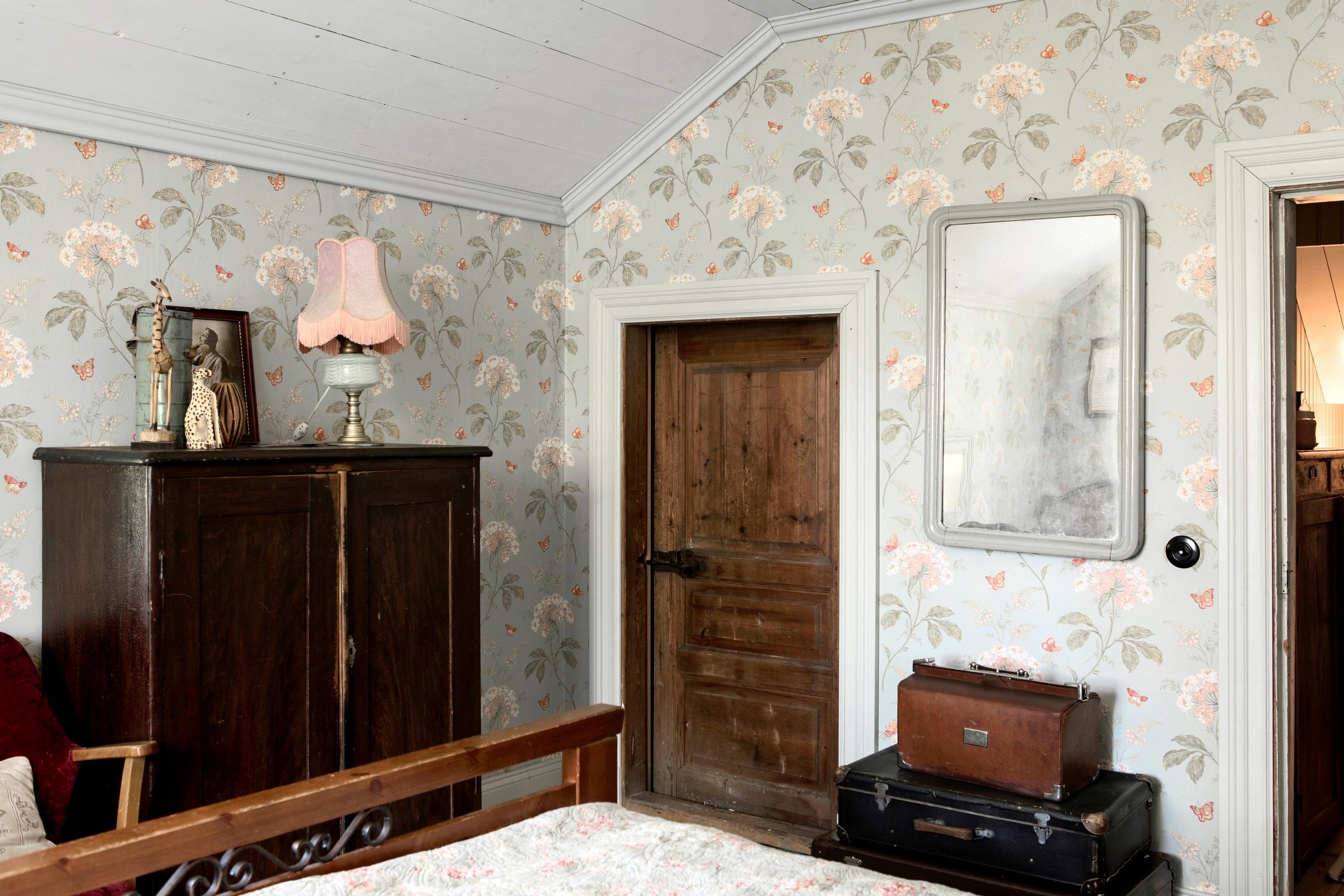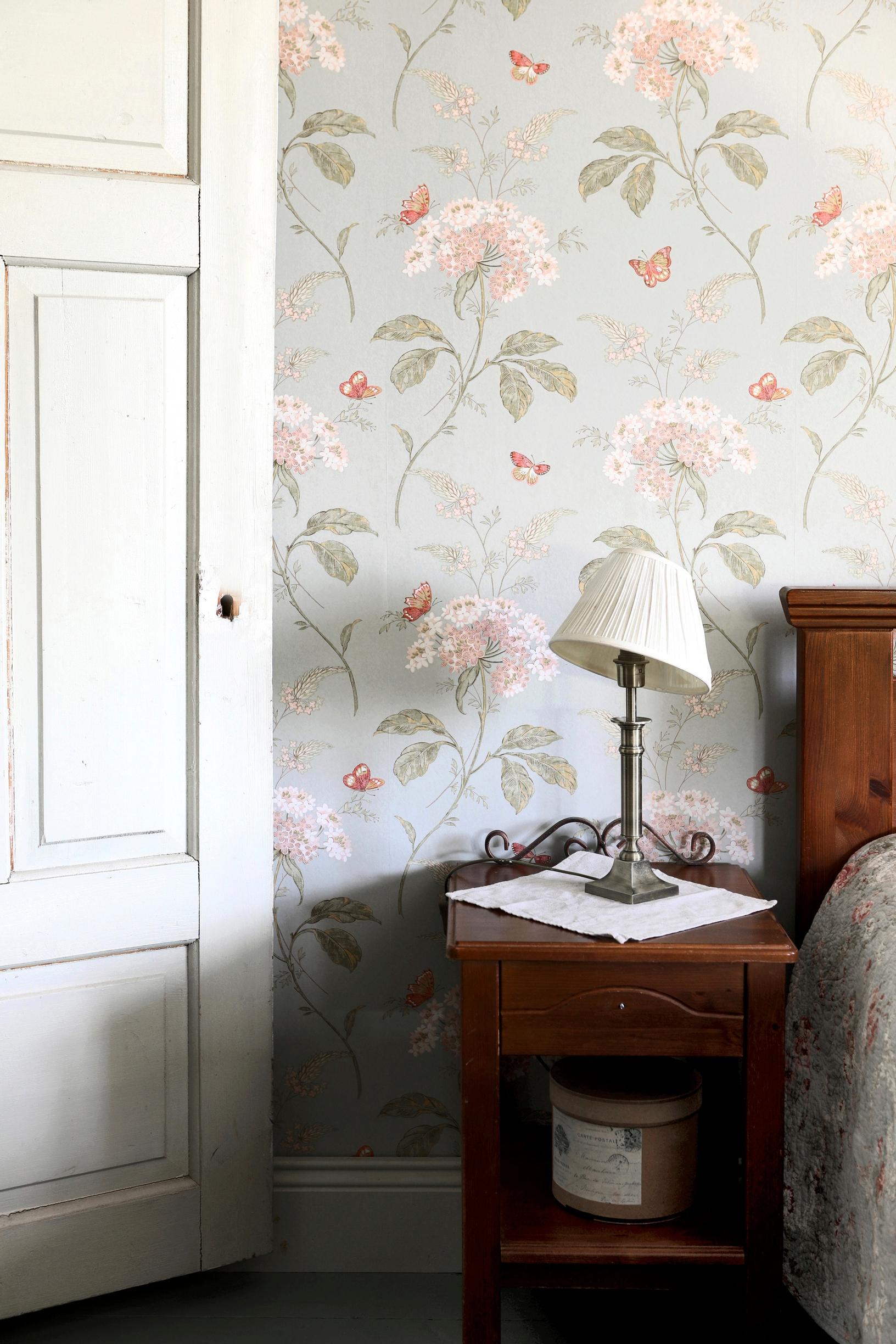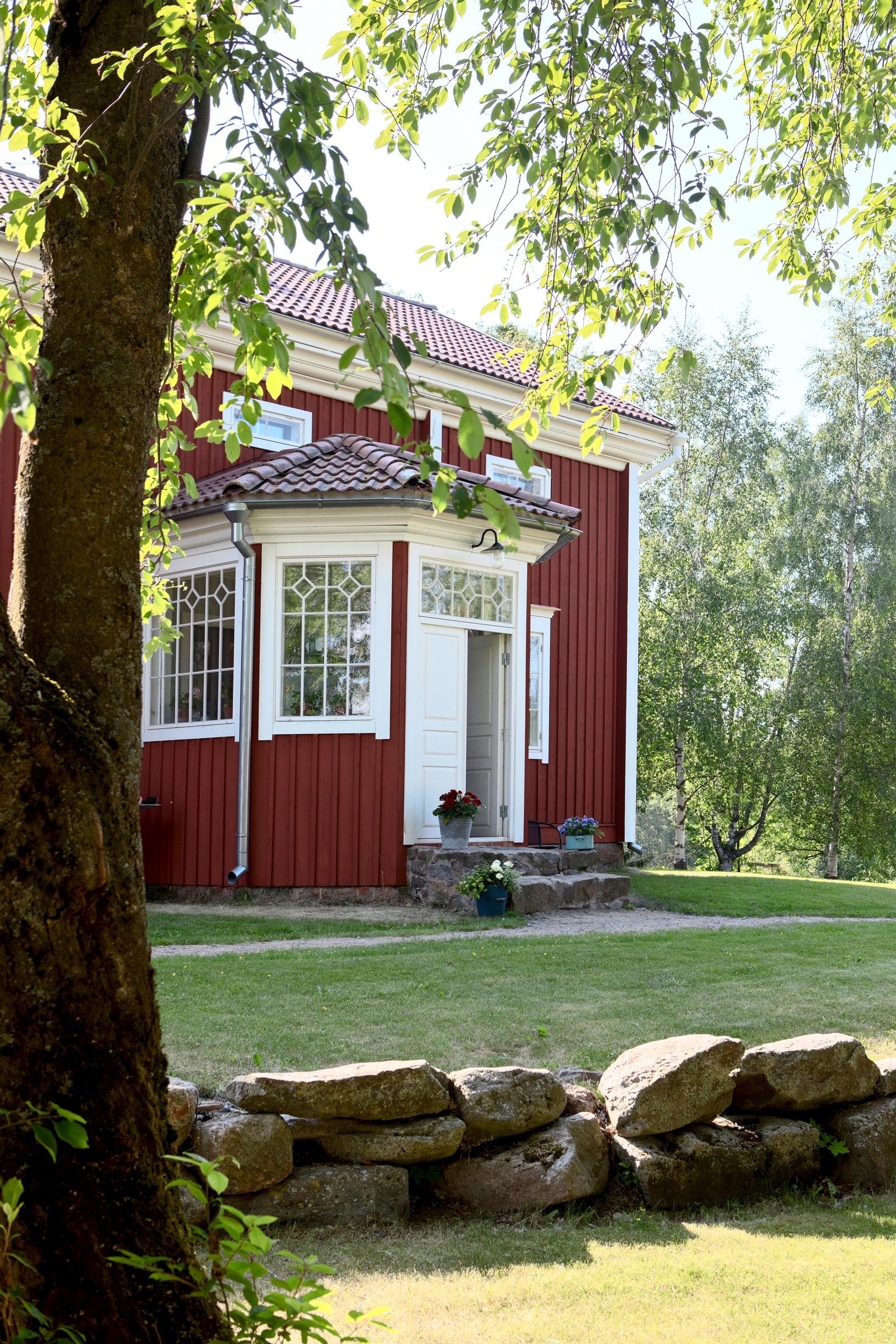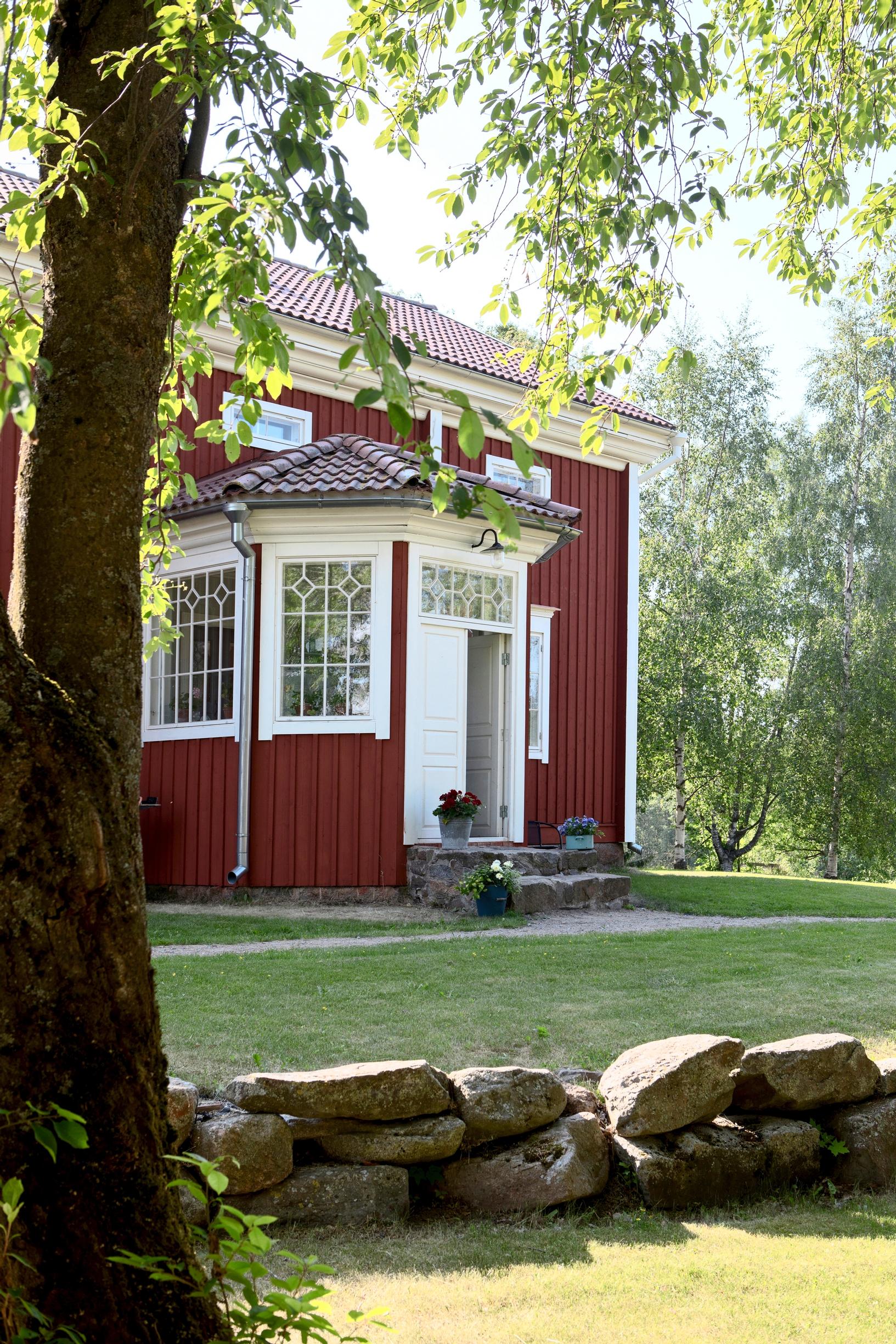
You’d never guess it’s new! This home exudes 100-year-old charm but was built in the 2000s
When Mia and Hans built their wooden house, they drew inspiration from the century-old Lufolk homestead. The atmosphere of the house was completed with logs and old window glass reclaimed from a demolished building, as well as antique doors and floor planks that the couple tracked down across the Finnish countryside in Ostrobothnia. “Our house project is a lifelong journey. We don’t have any schedules or a final completion date,” Mia says.
When Mia and Hans Ahlskog drove to the Lufolk homestead for the first time, they found an overgrown, brambly garden and half of a home. A massive rowan tree had fallen on top of it, pressing down the roof under its weight. The timeworn outbuildings, such as the granary and root cellar, hinted at the property’s beauty. To their own surprise, the couple decided this was where they wanted to settle.
“The partially demolished house couldn’t be saved, so we tore down what was left. We saved the logs and furniture we found inside. Then we decided to build a new house on the same spot. We had always dreamed of an old house and wanted our new one to fit in with the surroundings and look like it was 100 years old,” Mia explains.

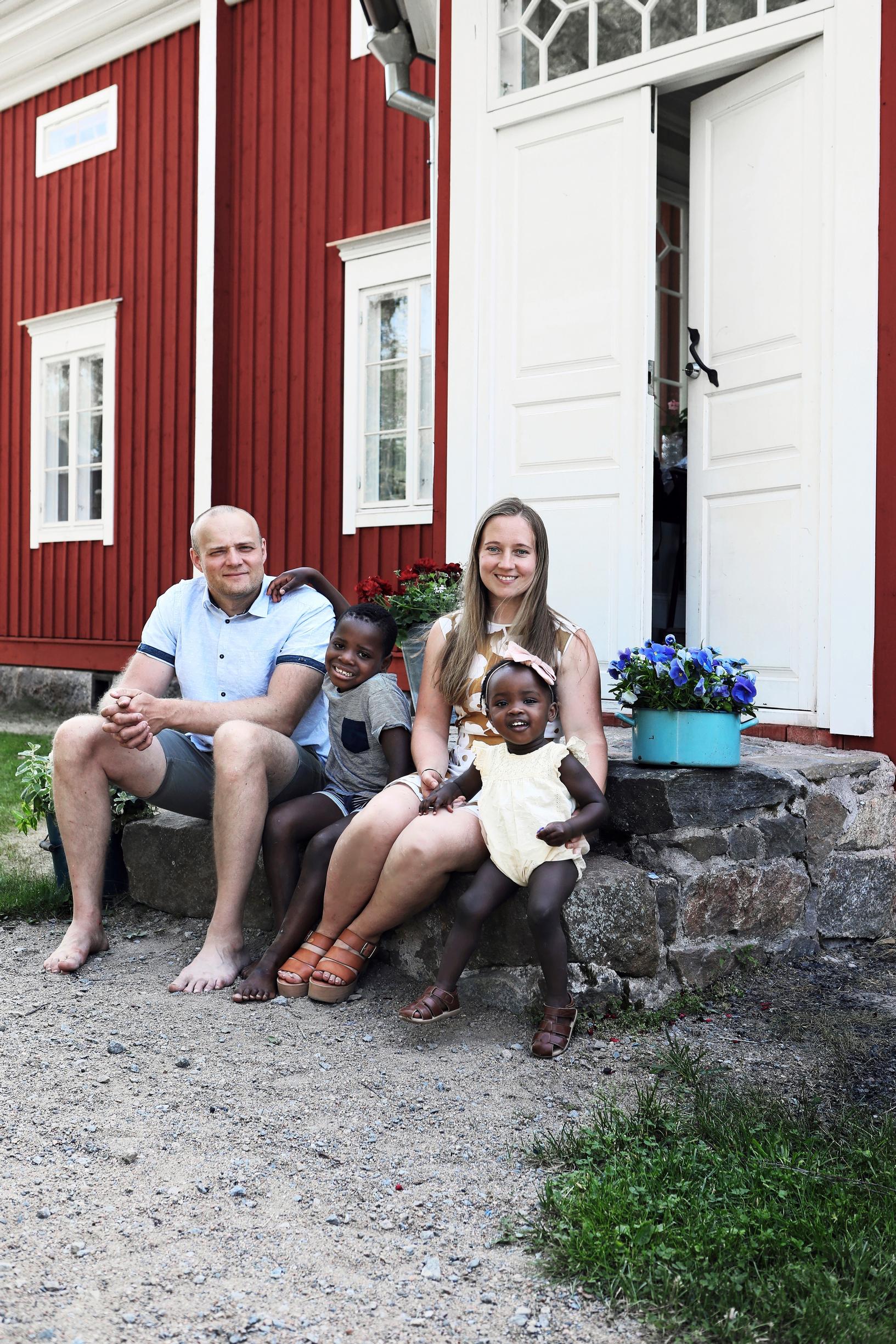
“Very few professionals are willing to install a floor whose every plank is a different thickness. Doing the work ourselves was the best solution.”

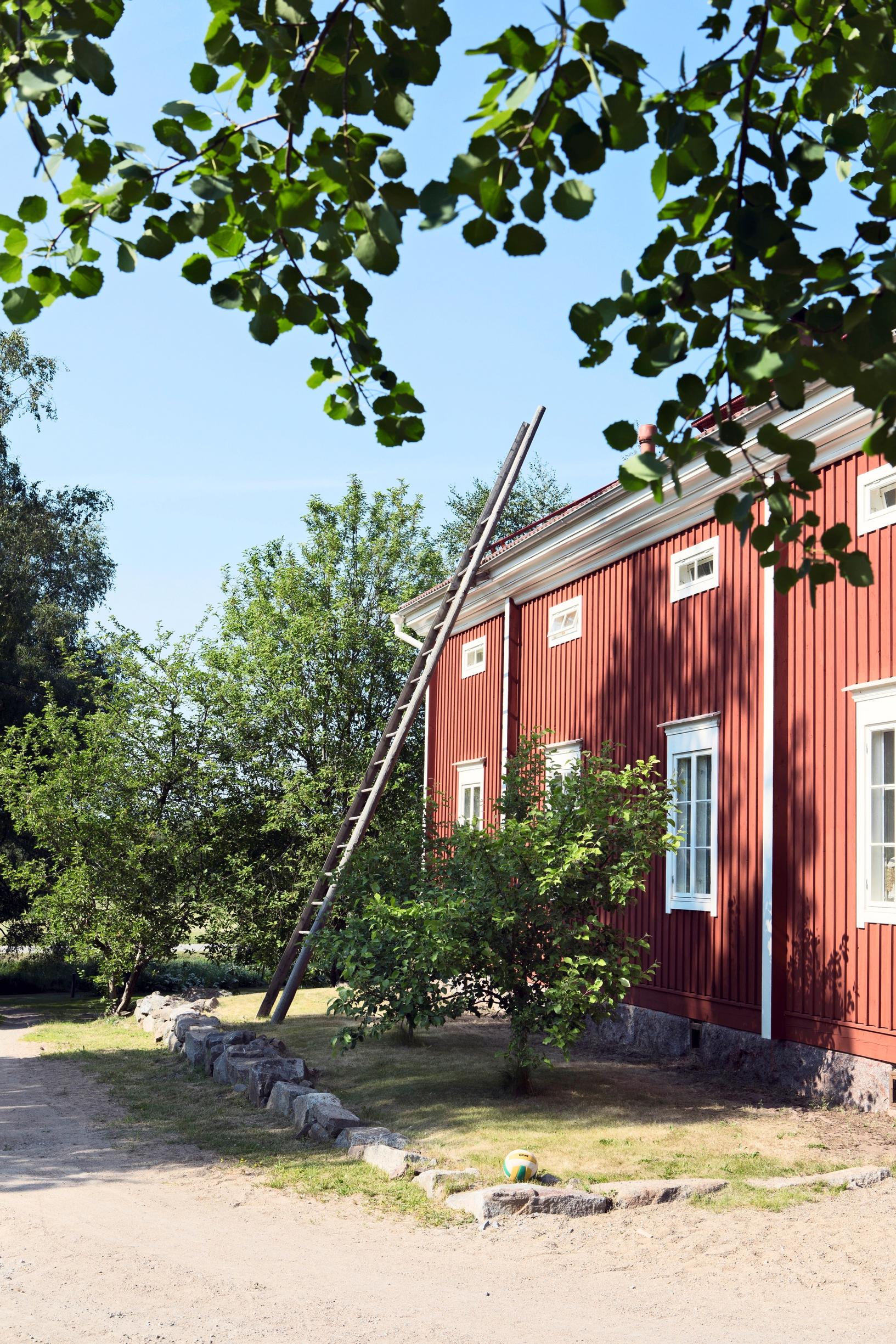
Mia and Hans knew that there had been a house at the Lufolk homestead since the 17th century. They found a photograph of the homestead taken in the early 1900s, which served as the model for the new house. The couple wanted their future home to be a balanced mix of old and new, and they sketched out the plans themselves.
“We wanted the house to exude the original atmosphere, so we drove across Ostrobothnia searching for old doors and floors,” Mia says.
They spent countless hours scraping the reclaimed doors clean and then painted the windows, doors, floors, and molding by hand with linseed and glue paint. The ceiling panels were nailed in place with forged nails.
“Very few professionals are willing to first drill holes for the nails and then hammer them in one by one. Or install a floor whose every plank is a different thickness. Doing the work ourselves was the best solution.”
“We had forgotten to number the logs during the demolition. The numbers would have helped us reassemble them in the correct order.”
Mia and Hans had saved the old floor planks and the organically textured window glass from the demolished house that had sat on the property. Even though the window frames of this roughly ten-year-old house are new, they feel ancient thanks to the century-old glass.
“The glass is alive and creates wonderful reflections that only old glass can create,” Mia says.
Hans explains that they wanted a log wall in the house to reinforce the sense of an old home. Therefore, they saved a wall’s worth of logs from the demolished house. Surprises were inevitable.
“We had forgotten to number the logs during the demolition. The numbers would have helped us reassemble them in the correct order. Another surprise was that the floor planks were too short. We had to add extensions in the middle and on the sides to make the floor whole,” Hans says.

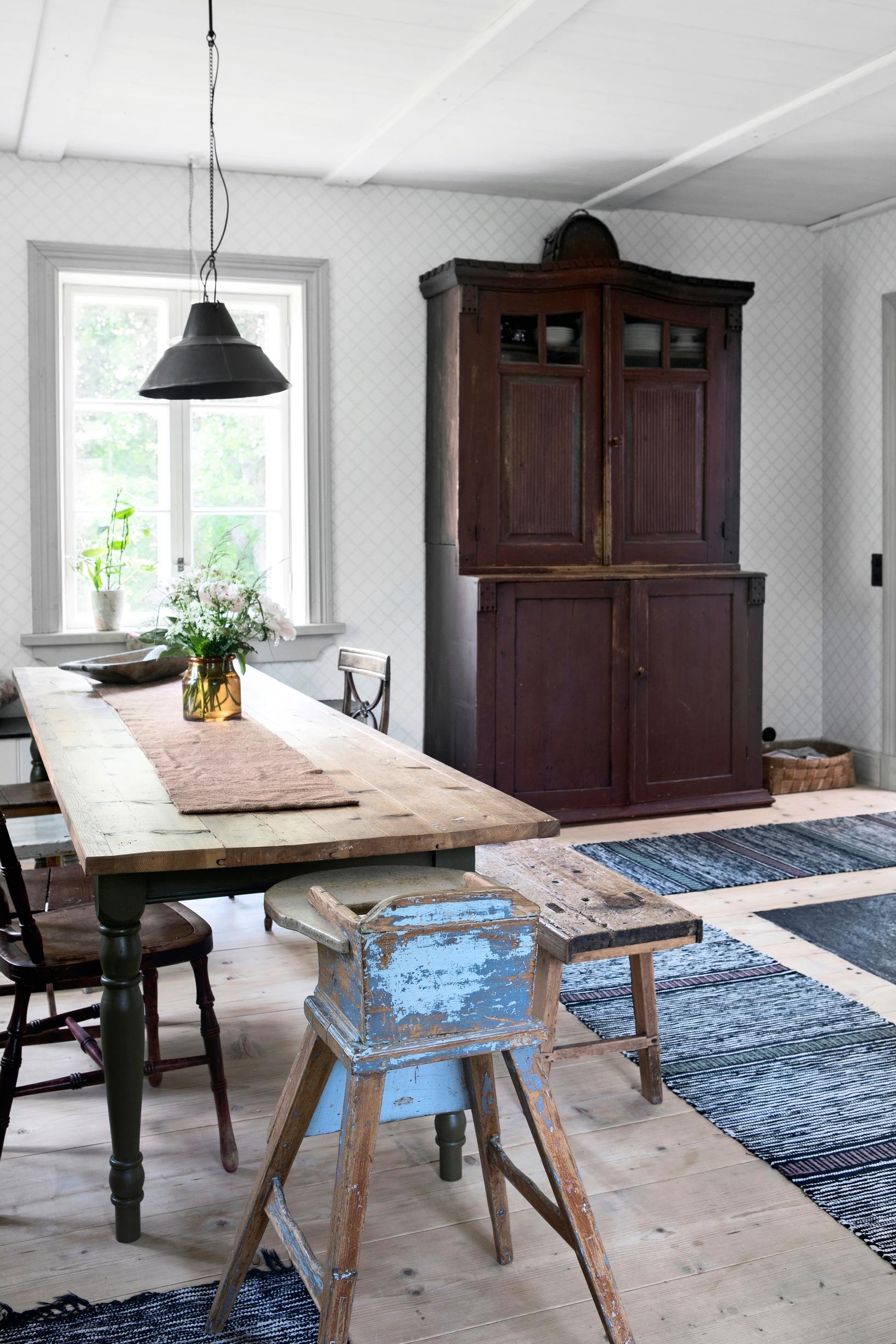

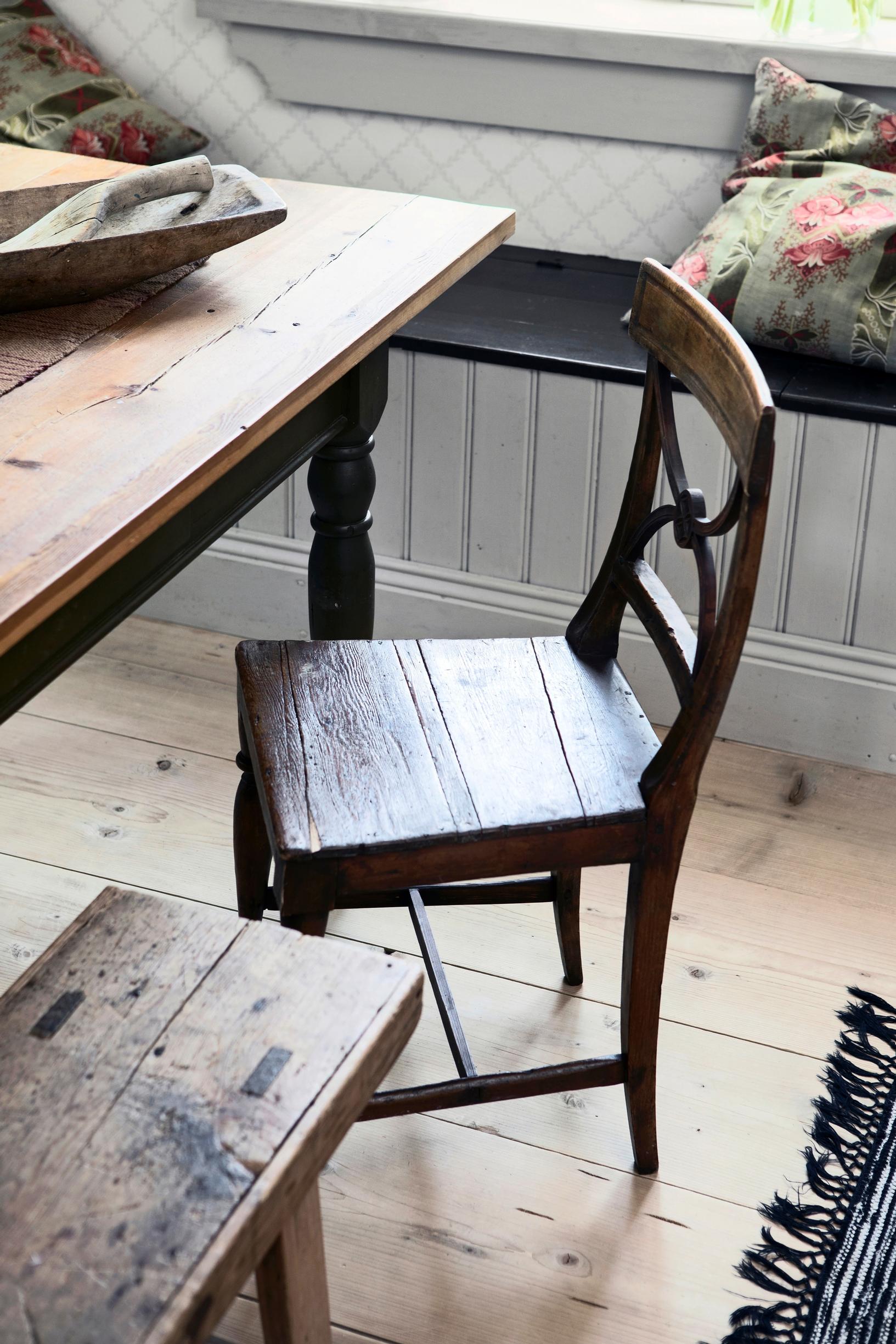

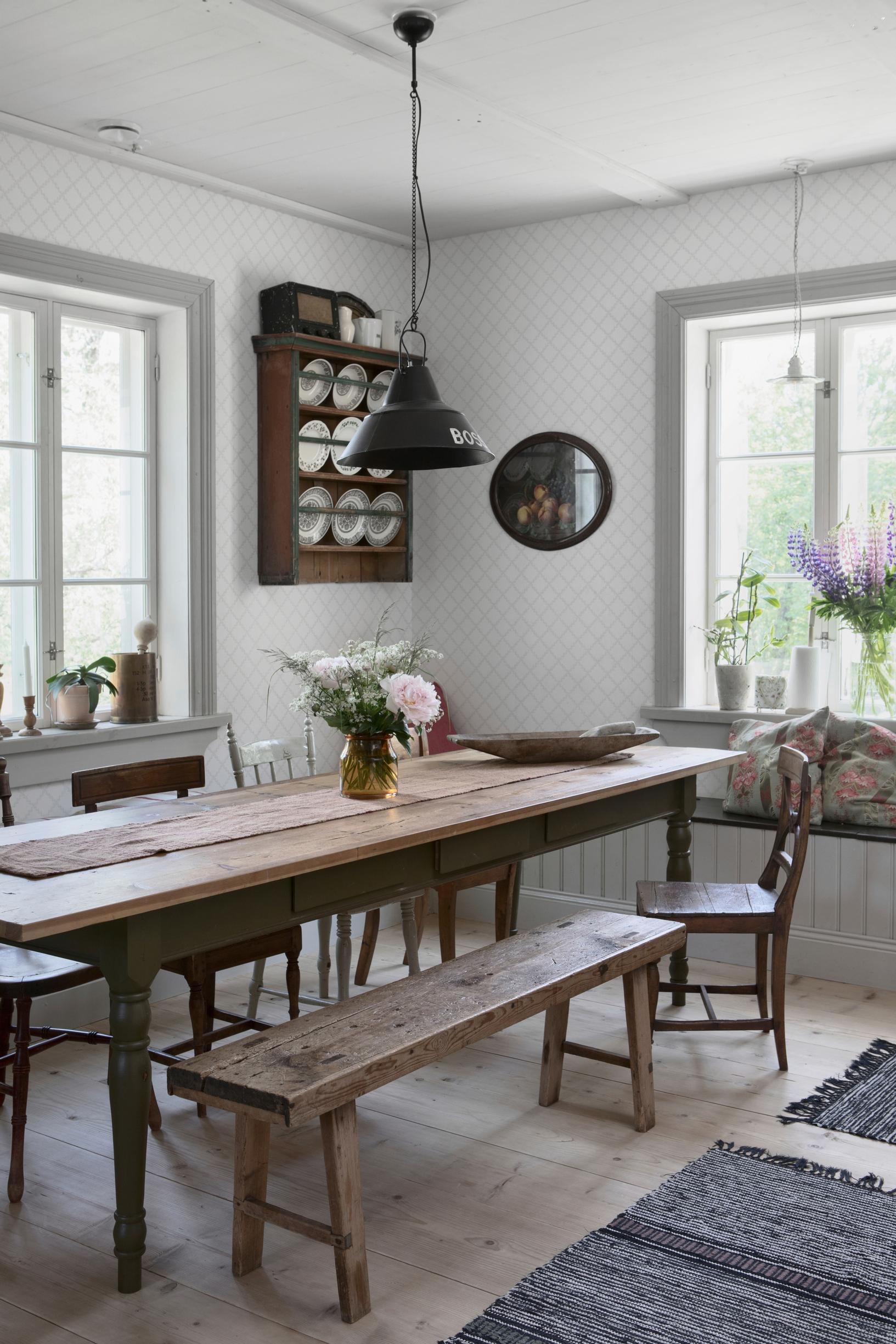
“We used the elongated floor plan of the old house, but avoiding narrow hallways was challenging.”

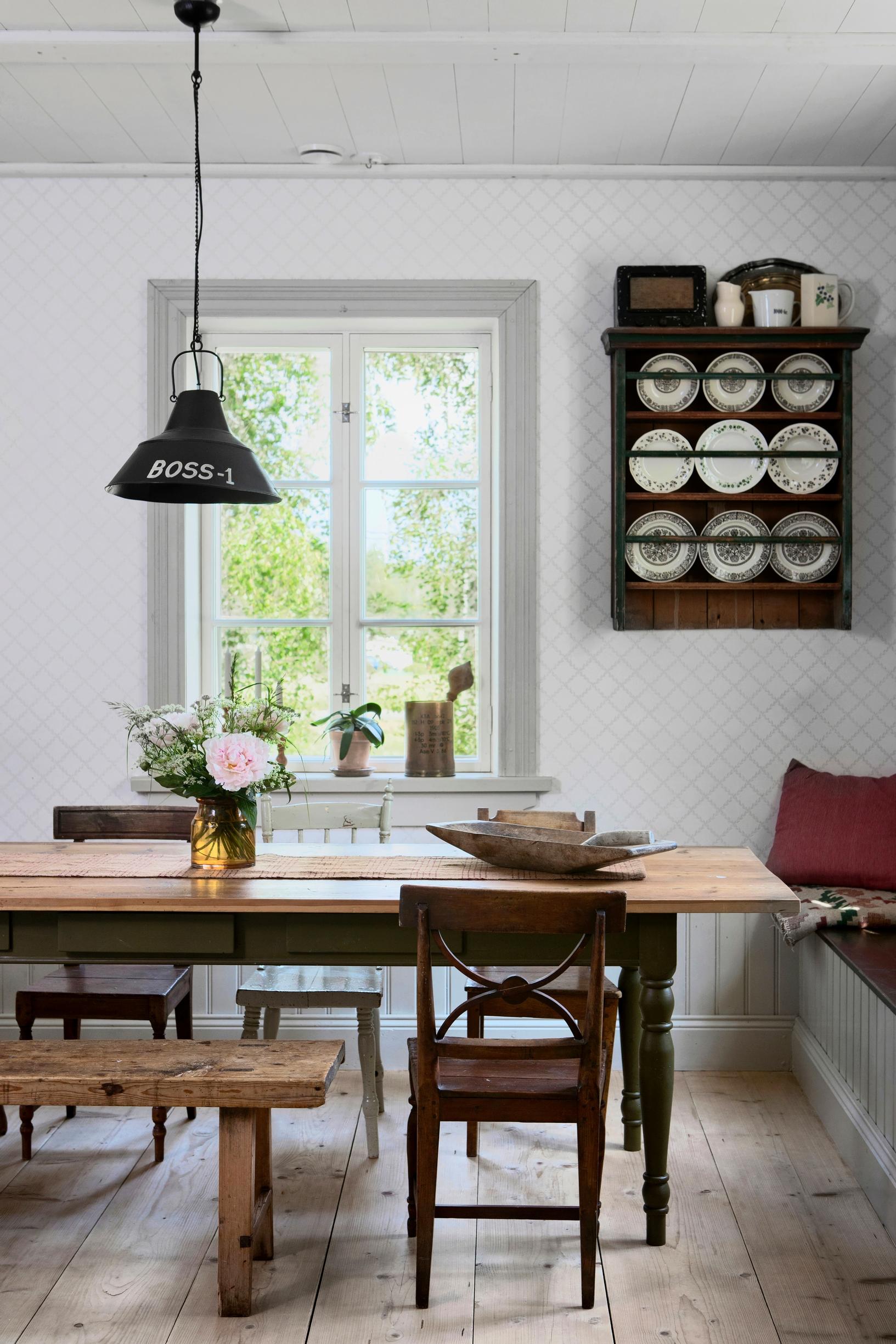

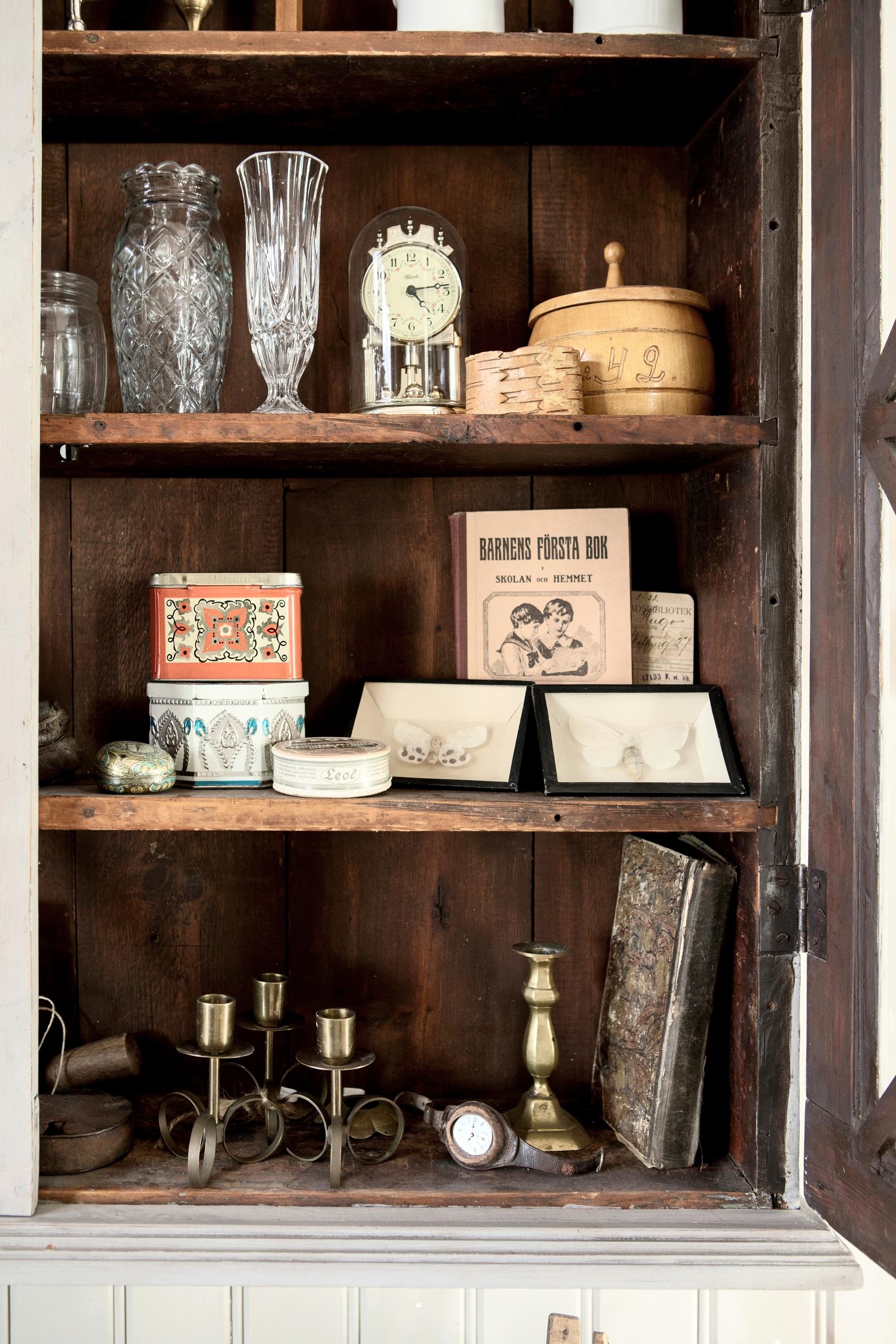

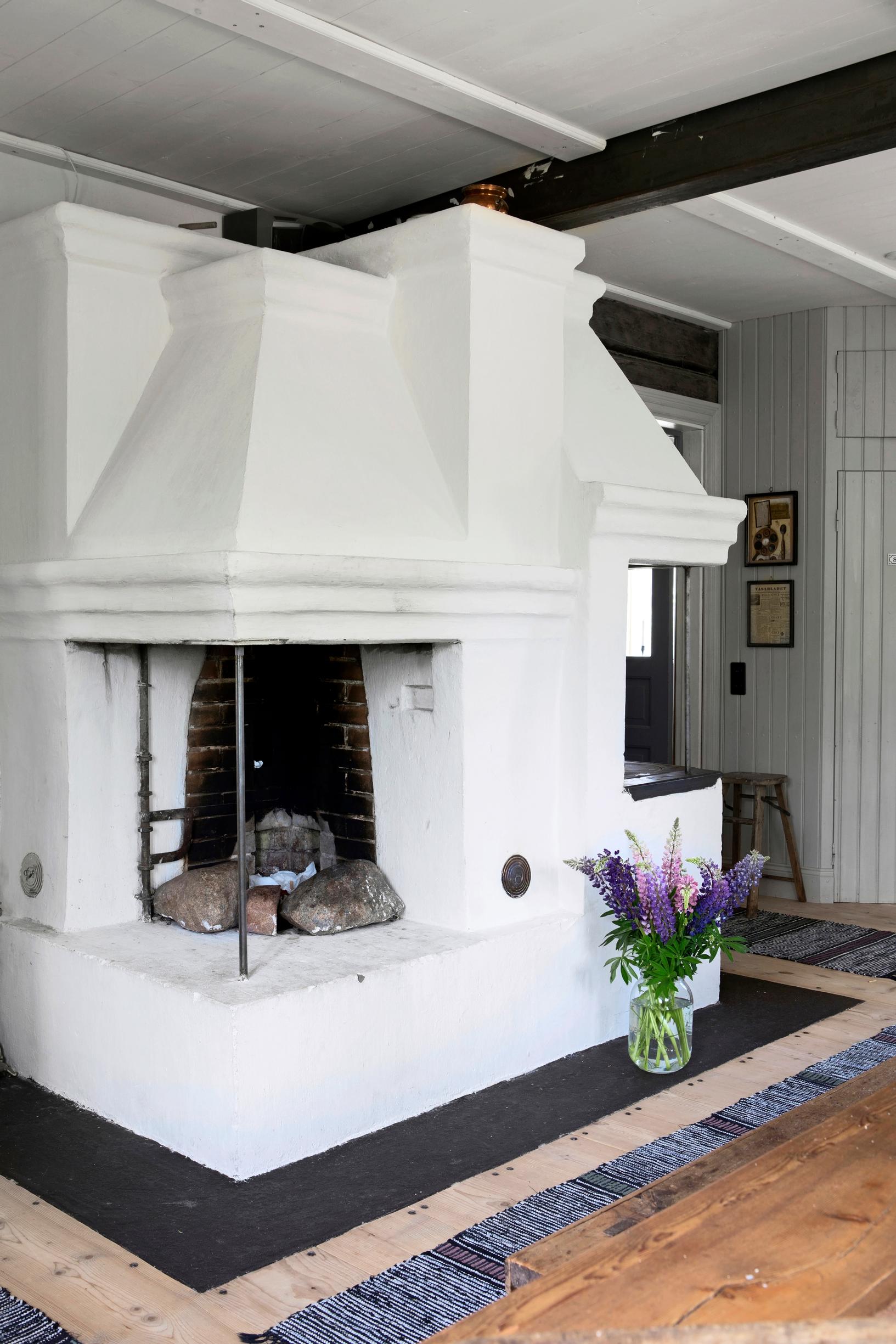
Hans and Mia placed the main living room—or the kitchen—at one end of the house, unlike in traditional Finnish farm layouts, in which the main living room is in the center of the building.
“We used the elongated floor plan of the old house, but avoiding narrow corridors between the rooms was challenging,” Hans says.
Recycling is second nature to Mia, and the house is furnished with old furniture and items. When Mia and Hans examined the outbuildings, they found many old items, such as an 18th-century measuring container used for buying potatoes. The wall cabinet in the entryway was discovered in the summer shed. Mia repaired it on a restoration course. The bedroom dresser was also found in the same spot and has been given new legs to replace the old rotted ones.
“Our house project is lifelong. Building is part of our life. We have no timetable or a completion deadline. Right now, we’re planning to build two bedrooms and a small sitting room in the attic. I’m really looking forward to decorating them,” Mia says.

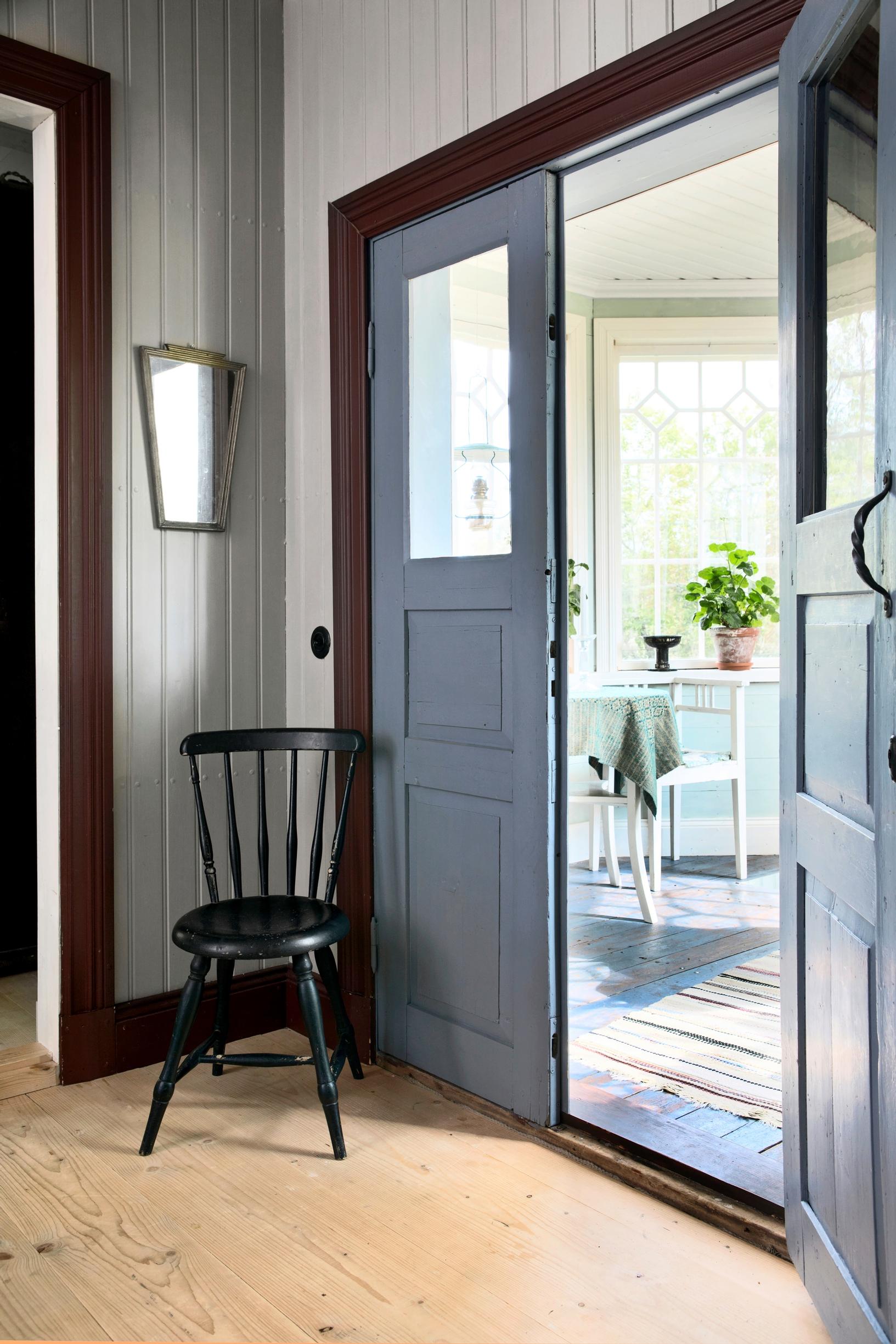

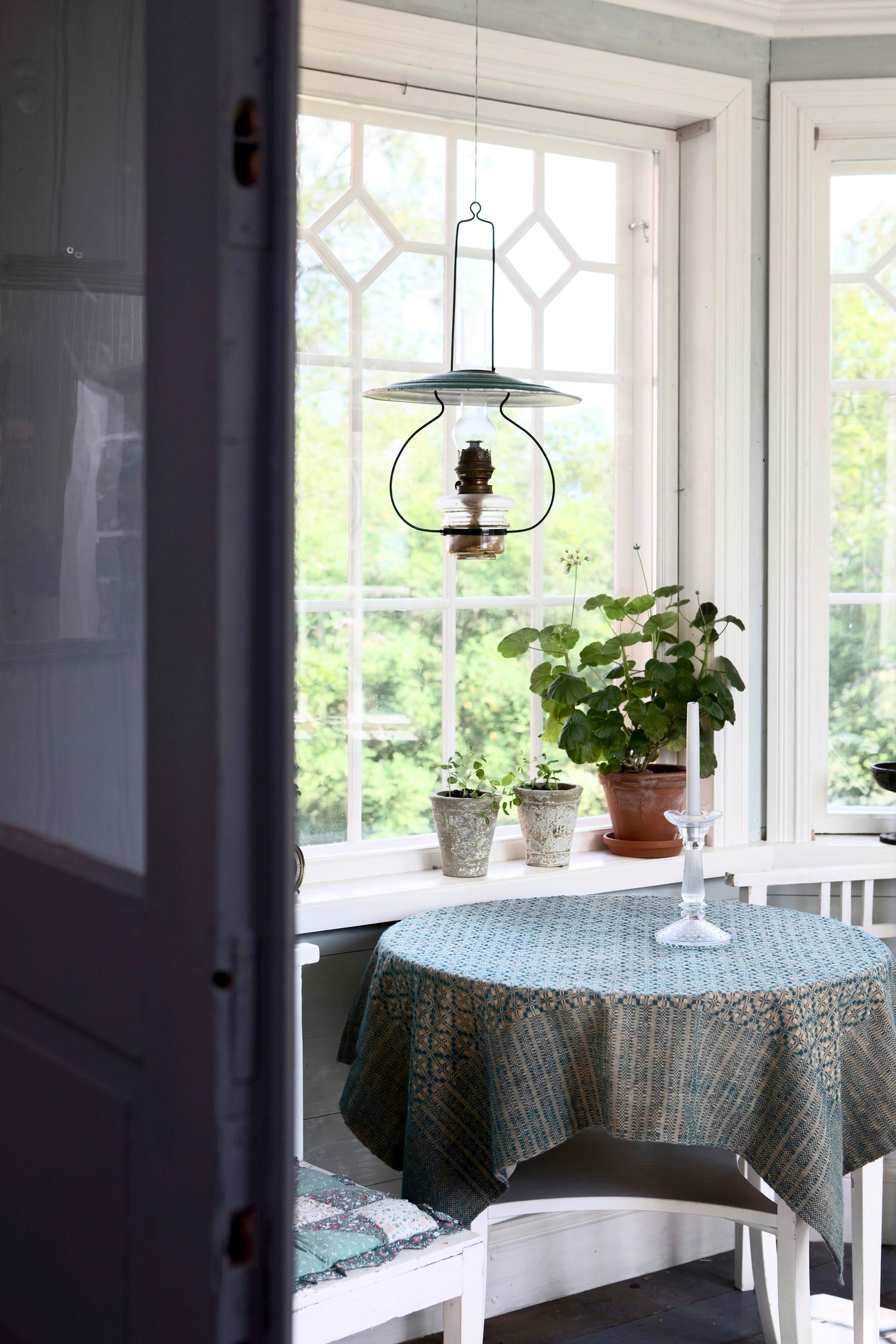
“Our house project is lifelong. Building is part of our life.”

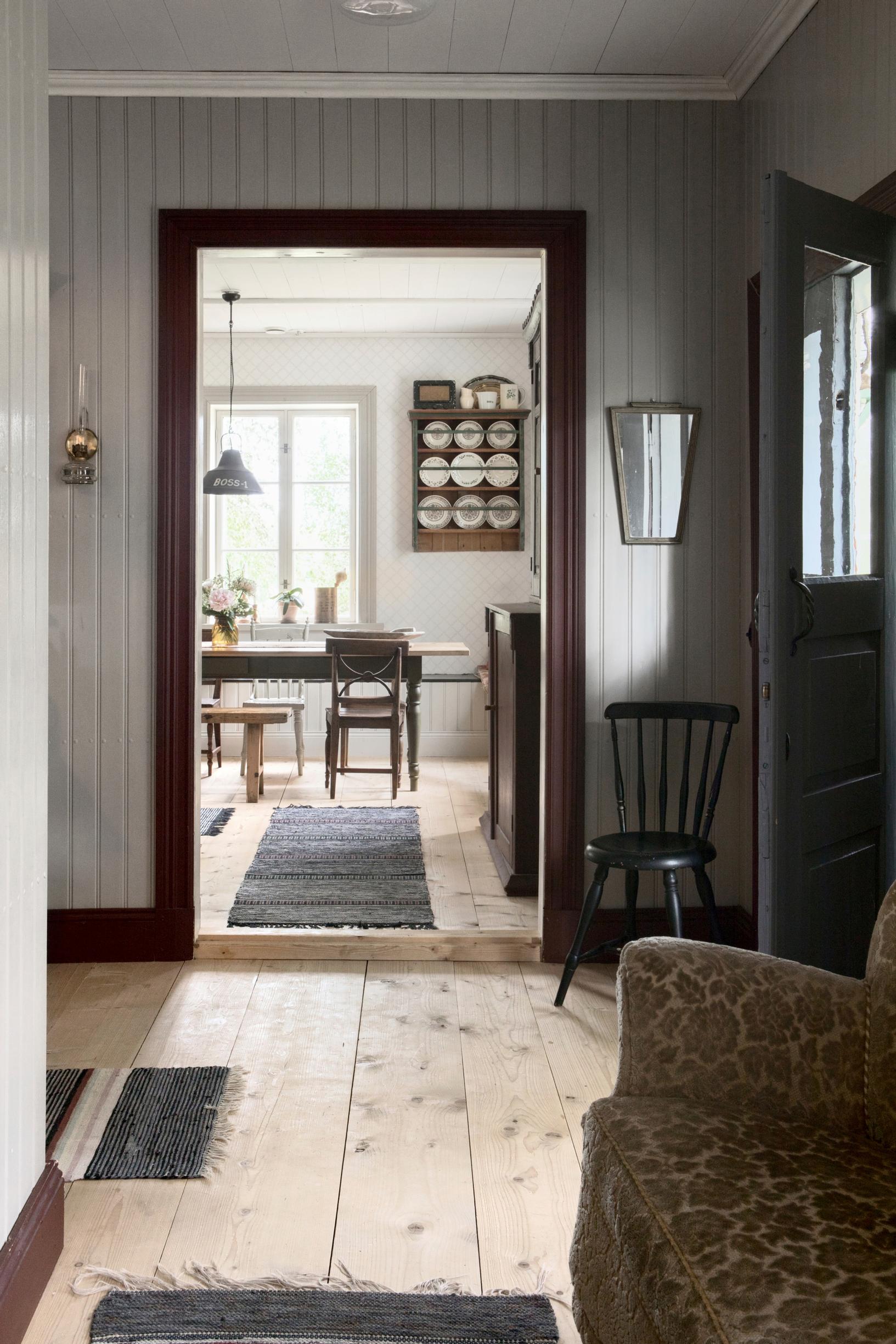

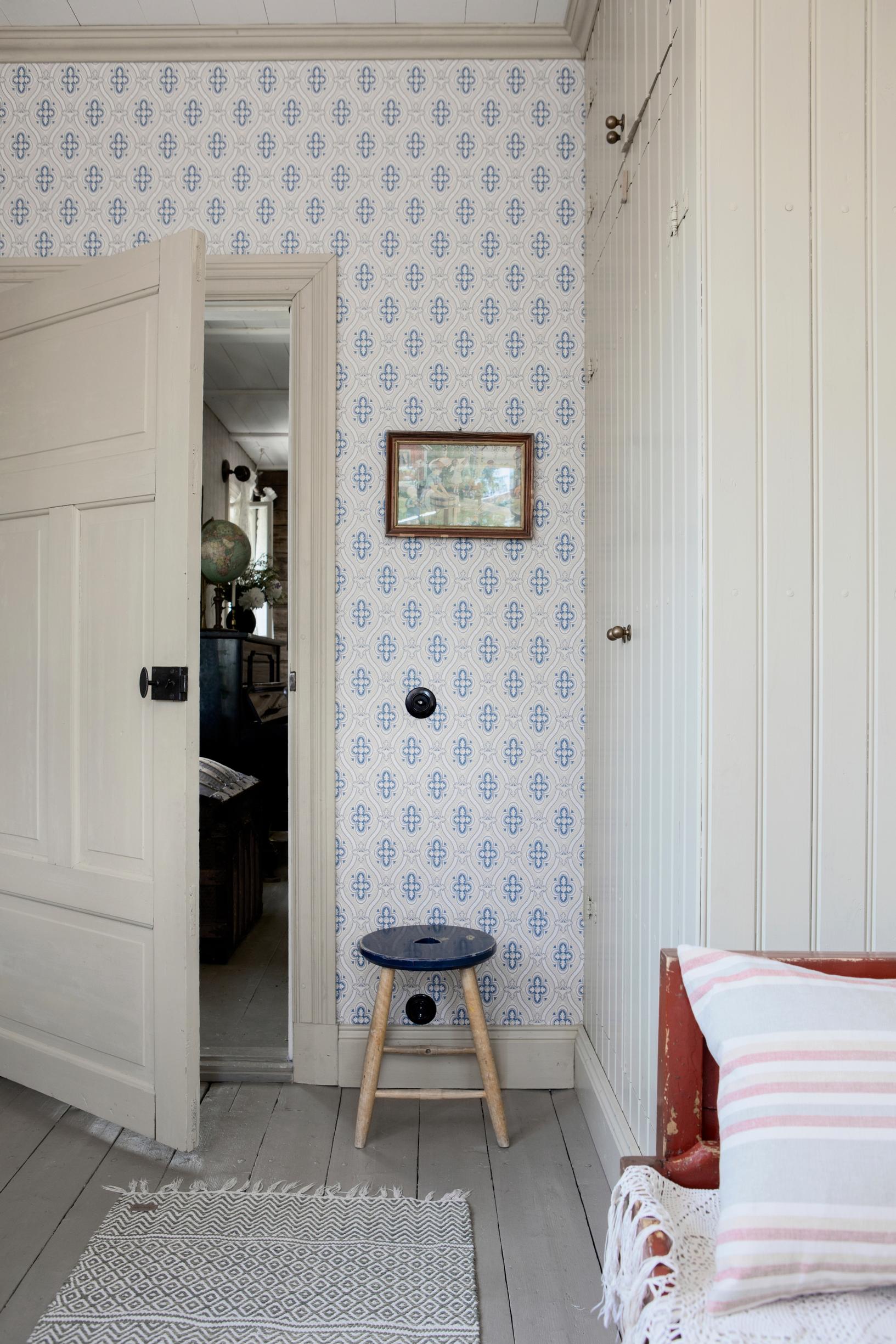

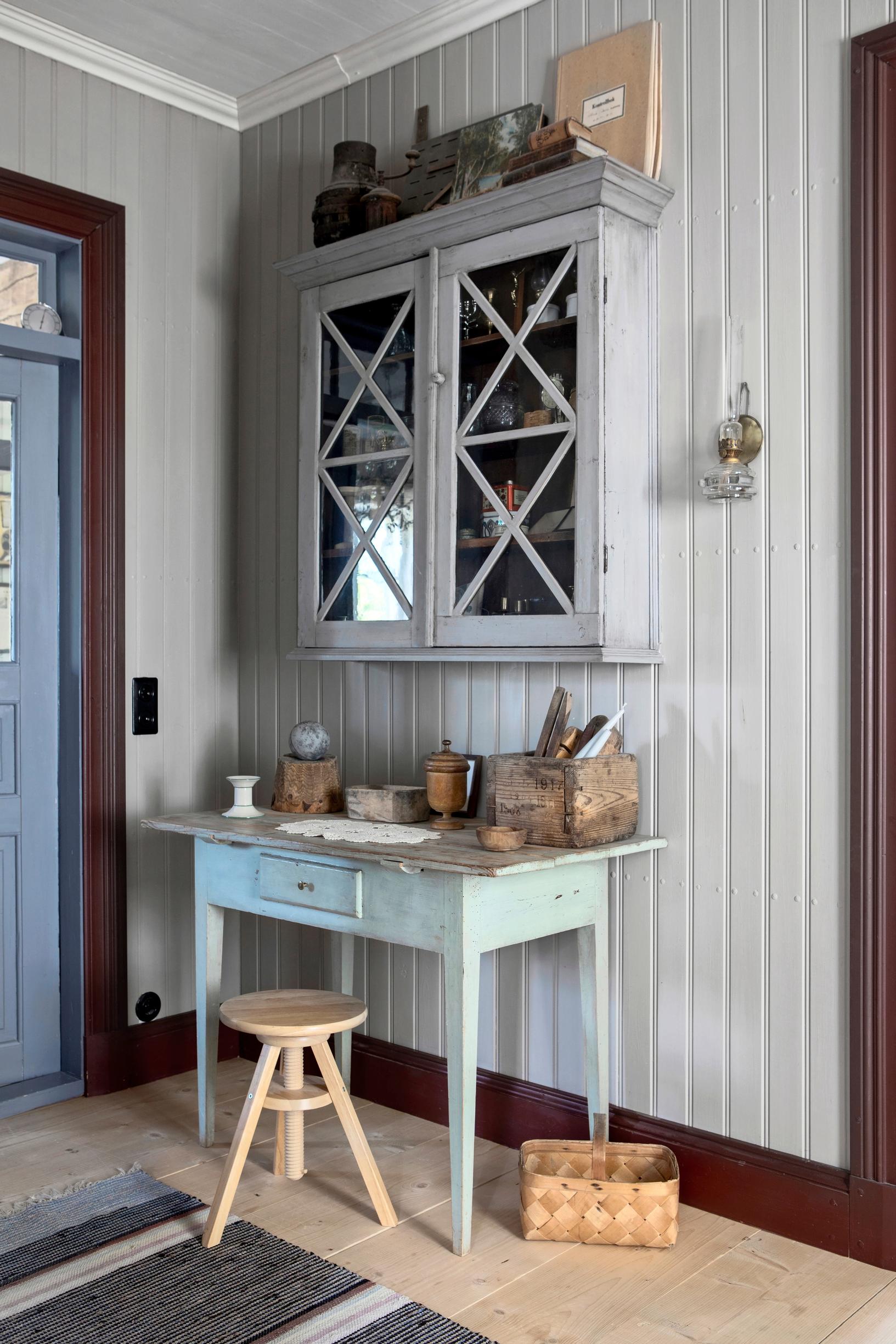
“We wanted the new house to fit into the environment and appear to be a hundred years old.”

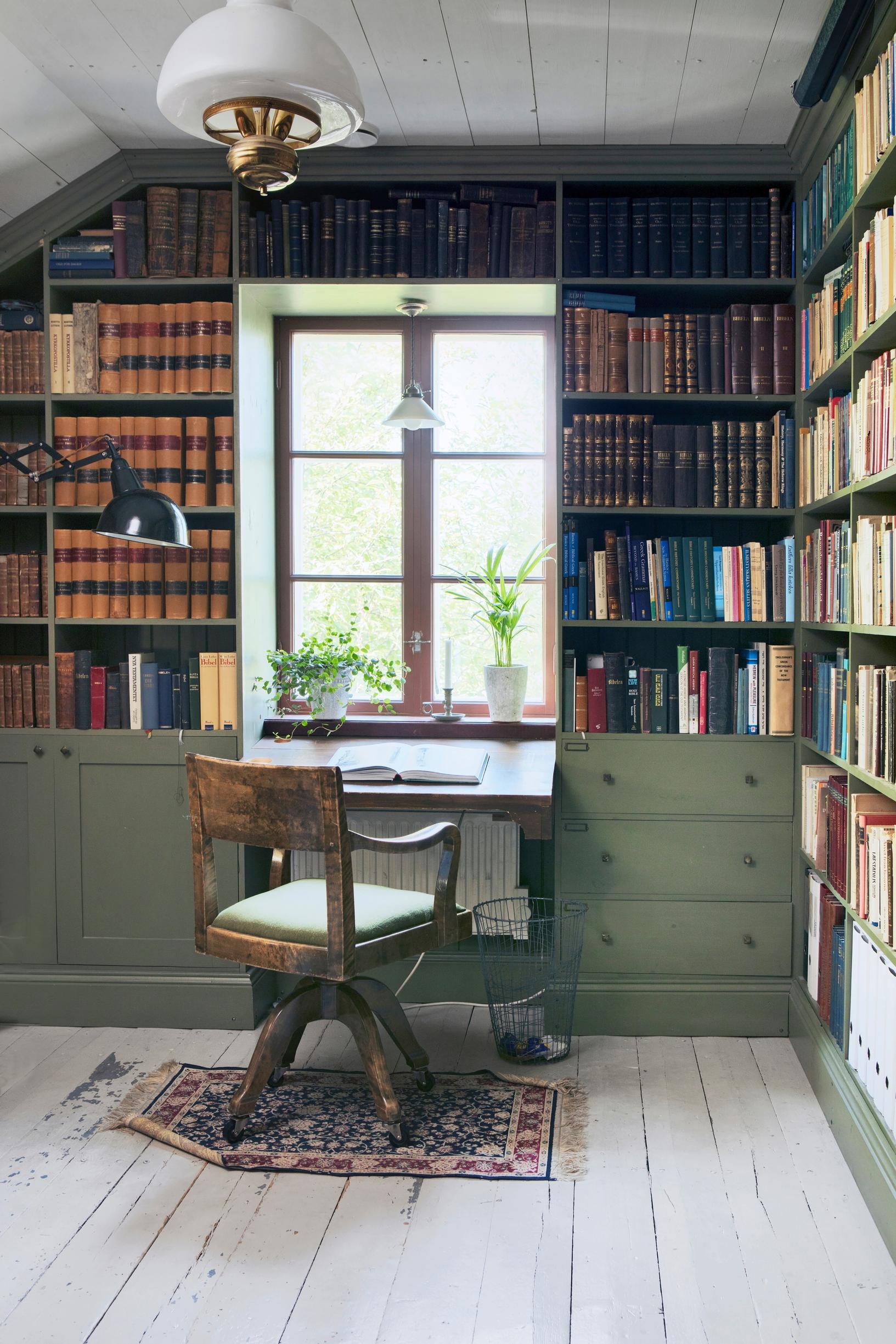

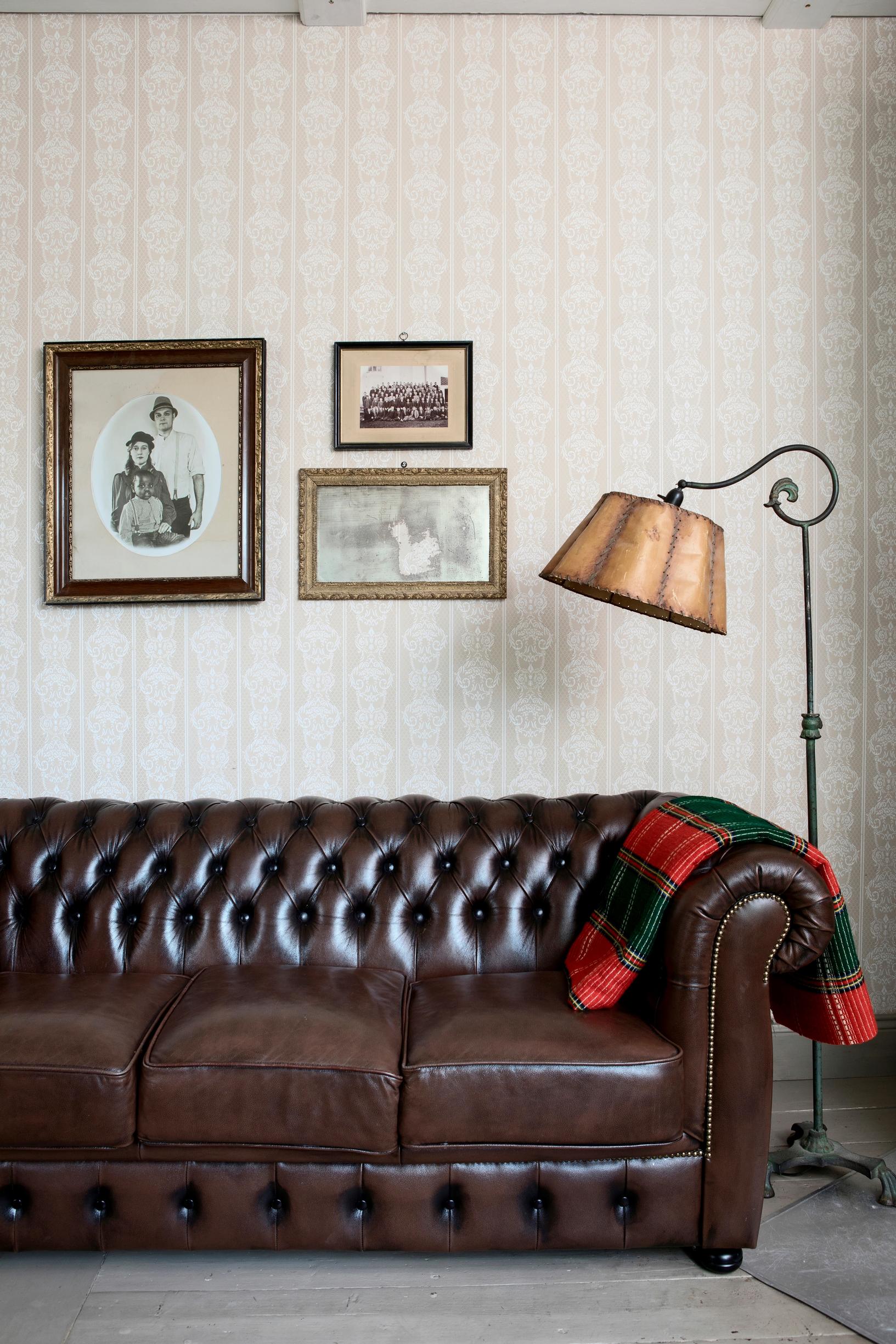

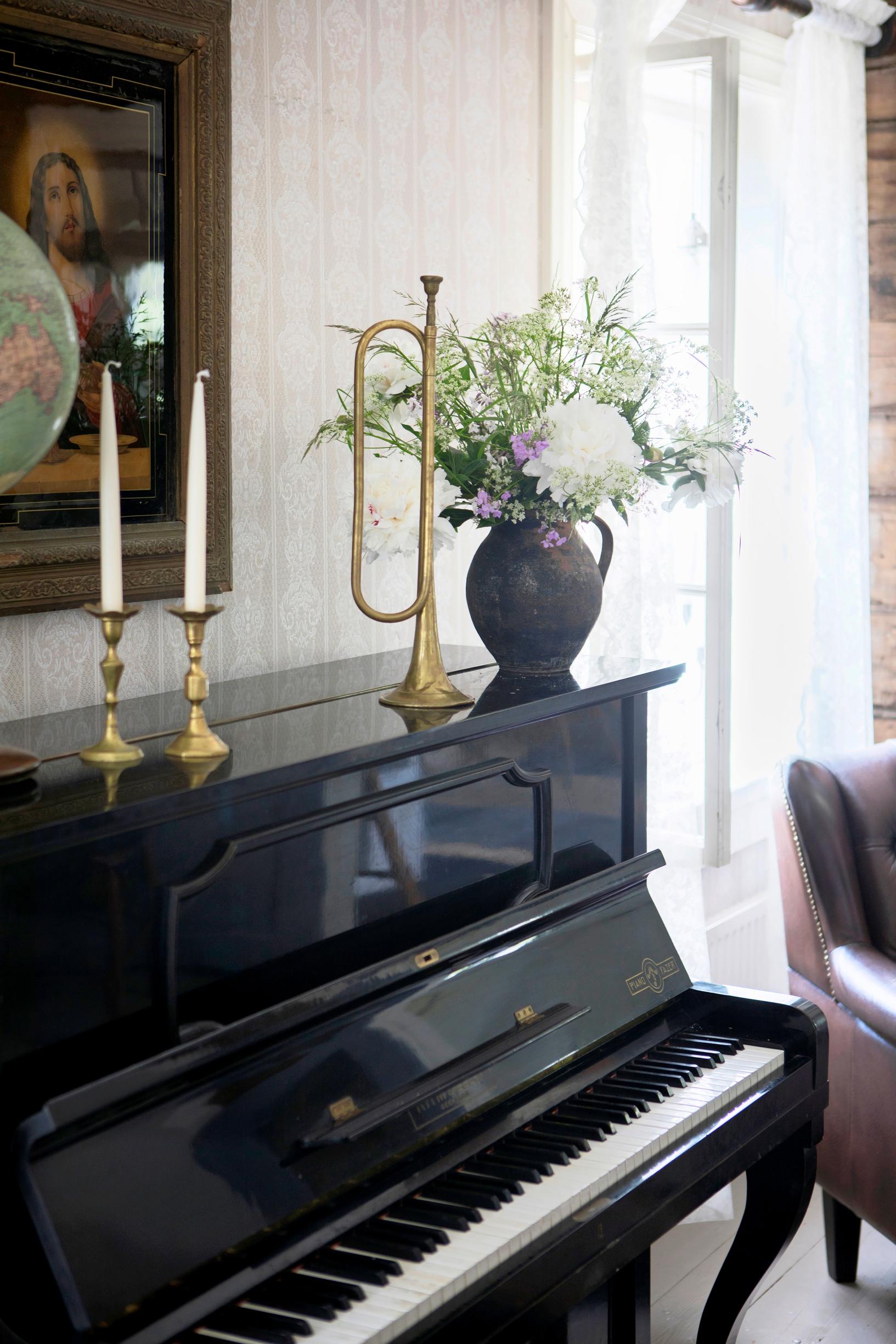

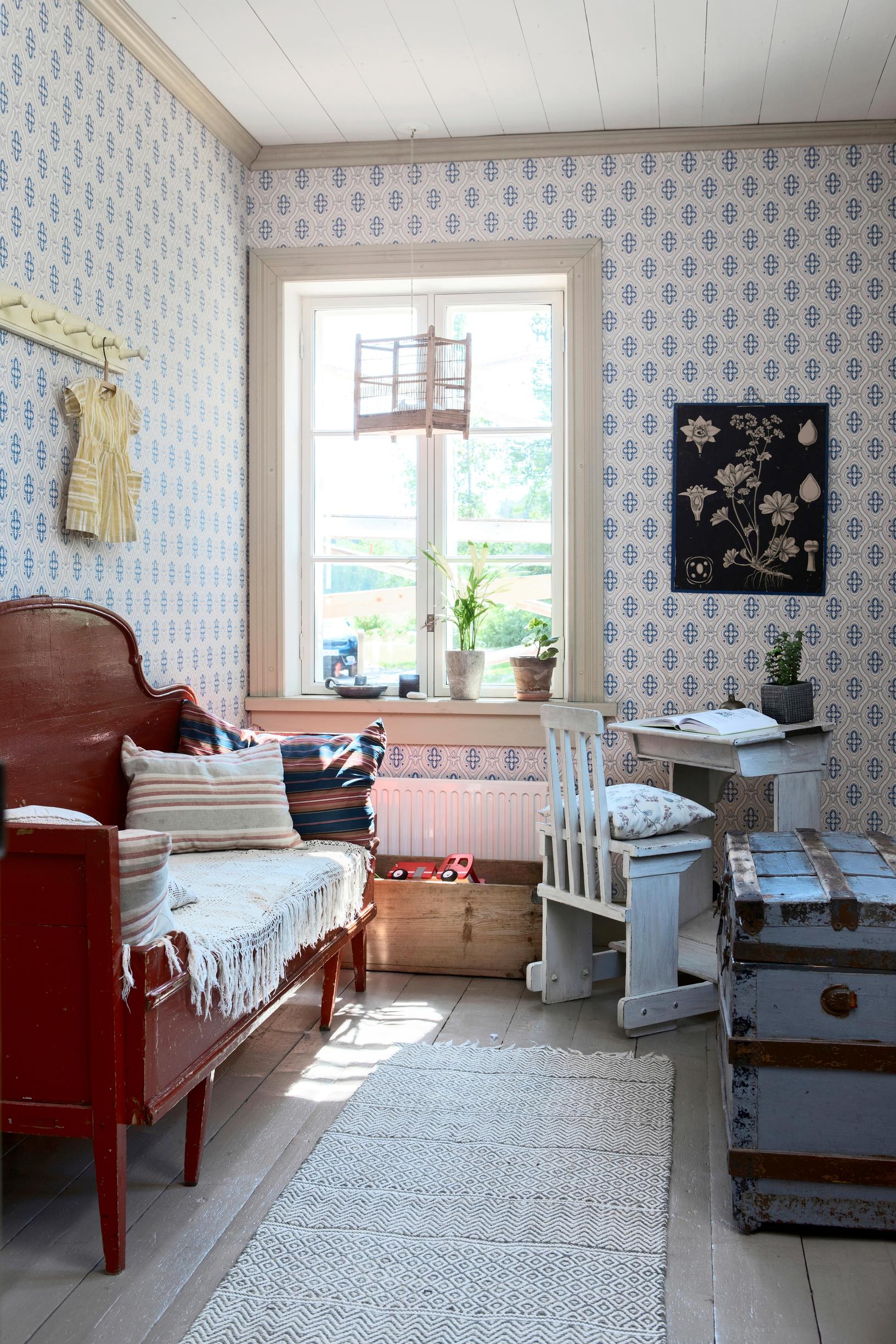
“We drove all around Ostrobothnia in search of old doors and floors.”

